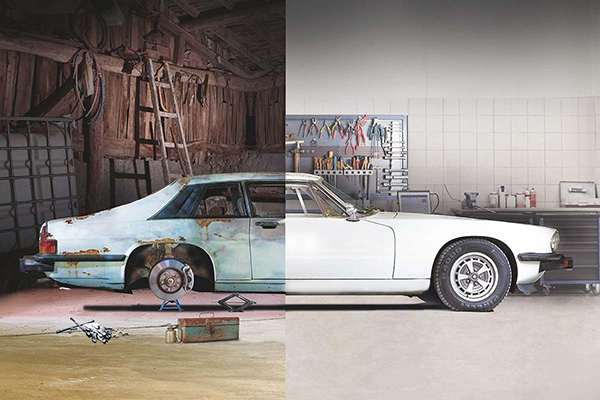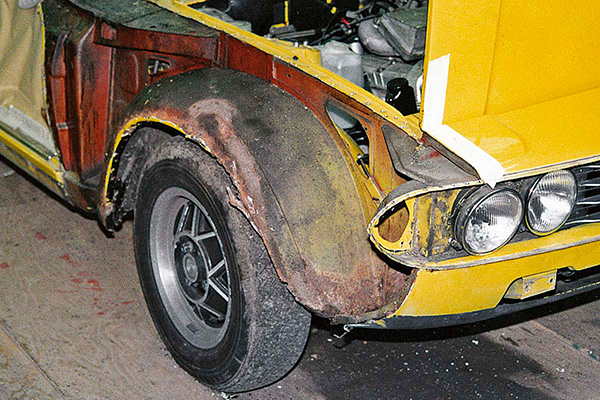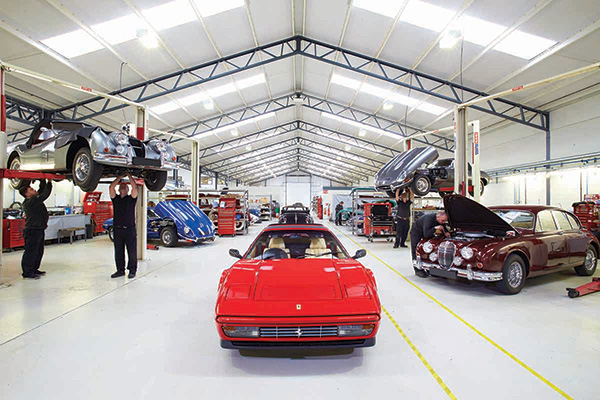30 July 2024
Look after your classic car and it will look after you. It’s a simple mantra and one that holds true no matter what car you have in your garage. Owning a classic is also a chance to learn some new skills, either because you want to be more self-reliant when out and about, or to save a few quid on those simple jobs.
Regular maintenance is key to keeping any classic ready and on the button to enjoy driving as the mood takes you. If you’re not experienced with servicing a car or working on older vehicles, there are plenty of evening and residential courses you can attend to learn the basics. Many classic car restoration companies and owners’ clubs also offer days where you can find out about fettling your particular make and model of classic car.
Back to school
Going back to school will give a less experienced classic car owner the confidence and skills they need to tackle basic jobs. These can include oil and filter changes, replacing the spark plugs, checking the ignition timing, topping up the coolant, greasing important joints, and making sure the brakes are working properly. From there, you can build up a repertoire of jobs that can be tackled, and will also get you home safely if your classic car decides to be a bit temperamental while out for a drive.
A key part of gaining new skills to look after your classic is knowing a bit about tools. Improving your knowledge is a good excuse to upgrade your toolbox and its contents, and there are plenty of good quality tools available at reasonable prices. By working on your car, you’ll also know which ones are best to carry in a tool roll in the boot should a problem come up when you’re away from home so you can deal with it.
Four key categories
The skills needed to look after a classic car fall into the broad categories of mechanical, electrical, bodywork, and interior. Within each of these important pillars of maintaining a car, there are many more talents you can master. For example, within bodywork you could learn to weld, form panels, paint, fill, panel beat, and polish. You might only need to learn one new skill for the job at hand, but it’s good to know how these different facets work together. It’s also important to remember that you don’t need to know everything as working on a classic car is meant to be fun. If you don’t enjoy a particular job or type of work, let a professional take care of it so you can get on with what makes you smile.

As with so many elements of looking after a classic car, an owner’s manual is vital to understanding its internal workings. For more popular models, there are plenty of service manuals and books detailing everything you could ever need to know about running and restoring that model. For other cars, an internet search often uncovers an original owners handbook with information about the servicing schedule and which oils and fluids to use. With that data stored on your smartphone, you can access it any time you need it.
For many classic car owners, working on the car is as much part of the pleasure as driving. From basic servicing work on the engine, gearbox, suspension, and brakes, you can progress on to more full-blooded mechanical work such as removing an engine’s cylinder head to “de-coke” it. This is removing the carbon build-up that happens as the petrol is burnt and necessary to the smooth running of the engine in many older cars.
Keeping the car’s bodywork in tip-top shape is important because it’s the first thing you see when you open the garage door or what many people comment on at car shows. It’s also vital to prevent corrosion taking hold, which is the enemy of all classic car owners. Being able to spot the early signs of rust can avoid major repairs and expense further down the line, and prevent your car being off the road for a long time.

Courtesy Veloce Books
The same vigilant approach pays dividends with the electrics of your car. For many classic car fans, anything to do with the electrics is a mystery and one best left alone. However, electrical gremlins are one of the most common causes of a breakdown, so learning how the electrics work and why they might go wrong can and will save you a lot of heartache sat by the roadside waiting for the recovery truck when the fault is usually something very simple.
Specialist skills
Some skills you can learn are best not deployed at the roadside however, such as welding or painting, which require the proper equipment and safety measures. It’s worth noting you should always put safety above all else when working on any car, so always wear protective clothing and eye protection. If you’re working under the car, use strong axles stands and not just a trolley jack. And always keep a fire extinguisher of the right type close to hand.

Learning new skills to keep your classic car on the road and in good condition has other benefits. It keeps the mind active and helps you understand how your car works more thoroughly, which also means you can diagnose problems earlier to deal with them before they cause a headache. Working on a classic car is also a lesson in patience as you often have to work out how different parts fit together before you can take them apart to fix a problem. Don’t be afraid to leave one job if it’s not going well and work on something else – you’ll often find the solution pops into your mind when you’re not sweating over a difficult to reach bolt. Knowing when to walk away is just as important as learning how to repair a classic car.

COMMENT